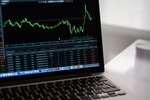
How Bad Will the Stock Market Get?
In recent trading days, global stock markets have seen massive…


In recent trading days, global stock markets have seen massive…

Joby Aviation (NYSE:JOBY) got started with the big idea of…

Tesla (TSLA) stock has often gone against the grain. It…
Market Cap: $2.6T
P/E Ratio: 30x
Market Cap: $2.6T
P/E Ratio: 28x
Market Cap: $2.3T
P/E Ratio: 33x
Direxion Daily Semiconductor Bear 3X Shares [SOXS] is up 11.22% over the past day.
Direxion Daily Technology Bear 3x Shares [TECS] is up 5.94% over the past day.
Direxion Daily Technology Bull 3x Shares [TECL] is down 6.24% over the past day.